Frequent persons on Philippines's street signs
countries
96 names / 1900 streets
José Rizal
 177
José Protasio Rizal Mercado y Alonso Realonda was a Filipino nationalist, writer and polymath active at the end of the Spanish colonial period of the Philippines. He is considered a national hero of...
177
José Protasio Rizal Mercado y Alonso Realonda was a Filipino nationalist, writer and polymath active at the end of the Spanish colonial period of the Philippines. He is considered a national hero of...
Maharlika
 133
The maharlika were the feudal warrior class in ancient Tagalog society in Luzon, the Philippines. They belonged to the lower nobility class similar to the timawa of the Visayan people. In modern...
133
The maharlika were the feudal warrior class in ancient Tagalog society in Luzon, the Philippines. They belonged to the lower nobility class similar to the timawa of the Visayan people. In modern...
Manuel L. Quezon
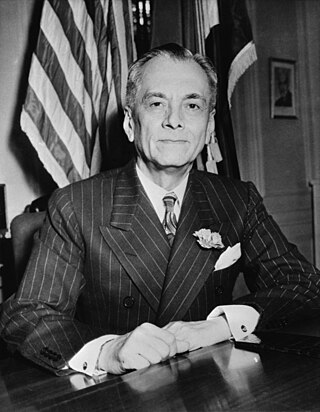 85
Manuel Luis Quezon y Molina, also known by his initials MLQ, was a Filipino lawyer, statesman, soldier, and politician who was president of the Commonwealth of the Philippines from 1935 until his...
85
Manuel Luis Quezon y Molina, also known by his initials MLQ, was a Filipino lawyer, statesman, soldier, and politician who was president of the Commonwealth of the Philippines from 1935 until his...
José Burgos
 65
José Apolonio Burgos y García was a Filipino Catholic priest, accused of mutiny by the Spanish colonial authorities in the Philippines in the 19th century. He was tried and executed in Manila along...
65
José Apolonio Burgos y García was a Filipino Catholic priest, accused of mutiny by the Spanish colonial authorities in the Philippines in the 19th century. He was tried and executed in Manila along...
Apolinario Mabini
 63
Apolinario Mabini y Maranan was a Filipino revolutionary leader, educator, lawyer, and statesman who served first as a legal and constitutional adviser to the Revolutionary Government, and then as...
63
Apolinario Mabini y Maranan was a Filipino revolutionary leader, educator, lawyer, and statesman who served first as a legal and constitutional adviser to the Revolutionary Government, and then as...
Andrés Bonifacio
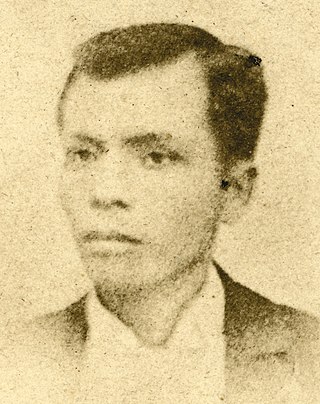 60
Andrés Bonifacio y de Castro was a Filipino revolutionary leader. He is often called "The Father of the Philippine Revolution", and considered one of the national heroes of the Philippines.
60
Andrés Bonifacio y de Castro was a Filipino revolutionary leader. He is often called "The Father of the Philippine Revolution", and considered one of the national heroes of the Philippines.
Saint Joseph
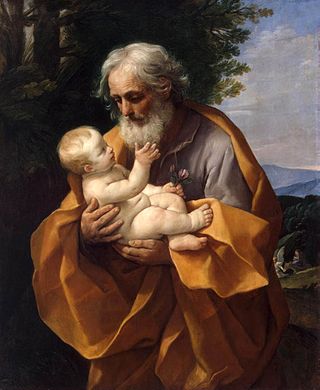 58
Joseph was a 1st-century Jewish man of Nazareth who, according to the canonical Gospels, was married to Mary, the mother of Jesus, and was the legal father of Jesus.
58
Joseph was a 1st-century Jewish man of Nazareth who, according to the canonical Gospels, was married to Mary, the mother of Jesus, and was the legal father of Jesus.
Ramon Magsaysay
 56
Ramon del Fierro Magsaysay was a Filipino statesman who served as the seventh President of the Philippines, from December 30, 1953, until his death in an aircraft disaster on March 17, 1957. An...
56
Ramon del Fierro Magsaysay was a Filipino statesman who served as the seventh President of the Philippines, from December 30, 1953, until his death in an aircraft disaster on March 17, 1957. An...
Douglas MacArthur
 48
Douglas MacArthur was an American military leader who served as General of the Army for the United States, as well as a field marshal to the Philippine Army. He served with distinction in World War...
48
Douglas MacArthur was an American military leader who served as General of the Army for the United States, as well as a field marshal to the Philippine Army. He served with distinction in World War...
Marcelo H. del Pilar
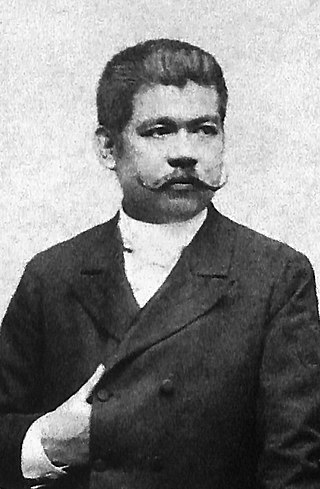 44
Marcelo Hilario del Pilar y Gatmaitán, commonly known as Marcelo H. del Pilar and also known by his nom de plume Pláridel, was a Filipino writer, lawyer, journalist, and freemason. Del Pilar, along...
44
Marcelo Hilario del Pilar y Gatmaitán, commonly known as Marcelo H. del Pilar and also known by his nom de plume Pláridel, was a Filipino writer, lawyer, journalist, and freemason. Del Pilar, along...
Santo Niño de Cebú
 42
The Señor Santo Niño de Cebú is a Catholic title of the Child Jesus associated with a religious image of the Christ Child widely venerated as miraculous by Filipino Catholics. It is the oldest...
42
The Señor Santo Niño de Cebú is a Catholic title of the Child Jesus associated with a religious image of the Christ Child widely venerated as miraculous by Filipino Catholics. It is the oldest...
Elpidio Quirino
 40
Elpidio Rivera Quirino was a Filipino lawyer and politician who served as the 6th President of the Philippines from 1948 to 1953.
40
Elpidio Rivera Quirino was a Filipino lawyer and politician who served as the 6th President of the Philippines from 1948 to 1953.
Saint Roch
 37
Roch, also called Rock in English, was a Majorcan Catholic confessor whose death is commemorated on 16 August and 9 September in Italy; he was especially invoked against the plague. He has the...
37
Roch, also called Rock in English, was a Majorcan Catholic confessor whose death is commemorated on 16 August and 9 September in Italy; he was especially invoked against the plague. He has the...
Antonio Luna
 37
Antonio Narciso Luna de San Pedro y Novicio Ancheta was a Filipino pharmacist and army general who fought in the Philippine–American War before his assassination on June 5, 1899 at the age of 32.
37
Antonio Narciso Luna de San Pedro y Novicio Ancheta was a Filipino pharmacist and army general who fought in the Philippine–American War before his assassination on June 5, 1899 at the age of 32.
Jacinto Zamora
 35
Jacinto Zamora y del Rosario was a Filipino Catholic priest, part of the Gomburza, a trio of priests who were falsely accused of mutiny by the Spanish colonial authorities in the Philippines in the...
35
Jacinto Zamora y del Rosario was a Filipino Catholic priest, part of the Gomburza, a trio of priests who were falsely accused of mutiny by the Spanish colonial authorities in the Philippines in the...
Isidore the Laborer
 33
Isidore the Laborer, also known as Isidore the Farmer, was a Spanish farmworker known for his piety toward the poor and animals. He is the Catholic patron saint of farmers, and of Madrid; El...
33
Isidore the Laborer, also known as Isidore the Farmer, was a Spanish farmworker known for his piety toward the poor and animals. He is the Catholic patron saint of farmers, and of Madrid; El...
Manuel Roxas
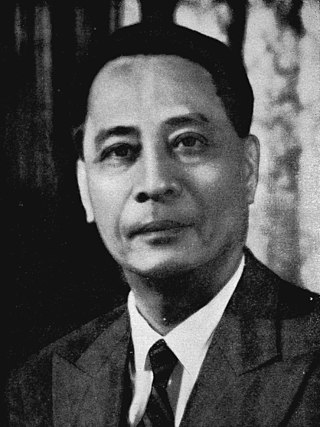 32
Manuel Acuña Roxas was a Filipino lawyer and politician who served as the fifth President of the Philippines from 1946 until his death in 1948. He served briefly as the third and last President of...
32
Manuel Acuña Roxas was a Filipino lawyer and politician who served as the fifth President of the Philippines from 1946 until his death in 1948. He served briefly as the third and last President of...
Mariano Gomez (priest)
 31
Mariano Gómes de los Ángeles, often known by his birth name Mariano Gómez y Custodio or Mariano Gomez in modern orthography, was a Filipino Catholic priest who was falsely accused of mutiny by the...
31
Mariano Gómes de los Ángeles, often known by his birth name Mariano Gómez y Custodio or Mariano Gomez in modern orthography, was a Filipino Catholic priest who was falsely accused of mutiny by the...
Michael (archangel)
 30
Michael, also called Saint Michael the Archangel, Archangel Michael and Saint Michael the Taxiarch is an archangel in Judaism, Christianity, Islam, and the Baha'i faith. The earliest surviving...
30
Michael, also called Saint Michael the Archangel, Archangel Michael and Saint Michael the Taxiarch is an archangel in Judaism, Christianity, Islam, and the Baha'i faith. The earliest surviving...
Francis of Assisi
 29
Giovanni di Pietro di Bernardone, known as Francis of Assisi, was an Italian mystic, poet and Catholic friar who founded the religious order of the Franciscans. He was inspired to lead a Christian...
29
Giovanni di Pietro di Bernardone, known as Francis of Assisi, was an Italian mystic, poet and Catholic friar who founded the religious order of the Franciscans. He was inspired to lead a Christian...
Jose P. Laurel
 26
José Paciano Laurel y García was a Filipino politician, lawyer, and judge, who served as the President of the Japanese-occupied Second Philippine Republic, a puppet state during World War II, from...
26
José Paciano Laurel y García was a Filipino politician, lawyer, and judge, who served as the President of the Japanese-occupied Second Philippine Republic, a puppet state during World War II, from...
José Abad Santos
 26
José Abad Santos y Basco was the fifth chief justice of the Supreme Court of the Philippines. He briefly served as the acting president of the Commonwealth of the Philippines and acting...
26
José Abad Santos y Basco was the fifth chief justice of the Supreme Court of the Philippines. He briefly served as the acting president of the Commonwealth of the Philippines and acting...
John of Nepomuk
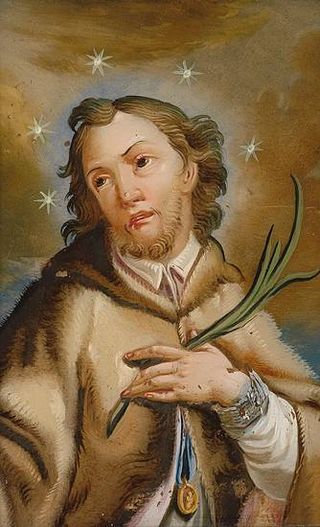 25
John of Nepomuk
was a saint of Bohemia who was drowned in the Vltava river at the behest of King Wenceslaus IV of Bohemia. Later accounts state that he was the confessor of the queen of Bohemia and...
25
John of Nepomuk
was a saint of Bohemia who was drowned in the Vltava river at the behest of King Wenceslaus IV of Bohemia. Later accounts state that he was the confessor of the queen of Bohemia and...
Saint Peter
 24
Saint Peter, also known as Peter the Apostle, Simon Peter, Simeon, Simon, or Cephas, was one of the Twelve Apostles of Jesus Christ and one of the first leaders of the early Christian Church. He...
24
Saint Peter, also known as Peter the Apostle, Simon Peter, Simeon, Simon, or Cephas, was one of the Twelve Apostles of Jesus Christ and one of the first leaders of the early Christian Church. He...
Emilio Aguinaldo
 23
Emilio Aguinaldo y Famy was a Filipino revolutionary, statesman, and military leader who is the youngest president of the Philippines (1899–1901) and became the first president of the Philippines and...
23
Emilio Aguinaldo y Famy was a Filipino revolutionary, statesman, and military leader who is the youngest president of the Philippines (1899–1901) and became the first president of the Philippines and...
Sergio Osmeña
 23
Sergio Osmeña Sr. was a Filipino lawyer and politician who served as the fourth President of the Philippines from 1944 to 1946. He was Vice President under Manuel L. Quezon. Upon Quezon's sudden...
23
Sergio Osmeña Sr. was a Filipino lawyer and politician who served as the fourth President of the Philippines from 1944 to 1946. He was Vice President under Manuel L. Quezon. Upon Quezon's sudden...
Eulogio Rodriguez
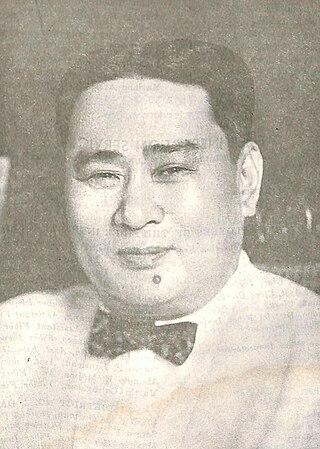 22
Eulogio "Amang" Adona Rodriguez Sr. was a Filipino politician who twice served as President of the Senate of the Philippines. He was known for vehemently confronting corruption during the...
22
Eulogio "Amang" Adona Rodriguez Sr. was a Filipino politician who twice served as President of the Senate of the Philippines. He was known for vehemently confronting corruption during the...
Claro M. Recto
 21
Claro Mayo Recto Jr. was a Filipino politician, statesman, lawyer, jurist, author, writer, columnist, and poet. Perhaps best known as the president of the 1934 Constitutional Convention and the...
21
Claro Mayo Recto Jr. was a Filipino politician, statesman, lawyer, jurist, author, writer, columnist, and poet. Perhaps best known as the president of the 1934 Constitutional Convention and the...
Natalio Bacalso
 21
Natalio Bacus Bacalso was a Filipino writer, newspaperman, radio broadcaster, filmmaker, Constitutional Convention delegate in 1971 representing Cebu's 2nd district, and opposition assemblyman to the...
21
Natalio Bacus Bacalso was a Filipino writer, newspaperman, radio broadcaster, filmmaker, Constitutional Convention delegate in 1971 representing Cebu's 2nd district, and opposition assemblyman to the...
Anthony of Padua
 20
Anthony of Padua, OFM or Anthony of Lisbon was a Portuguese Catholic priest and friar of the Franciscan Order.
20
Anthony of Padua, OFM or Anthony of Lisbon was a Portuguese Catholic priest and friar of the Franciscan Order.
Vincent Ferrer
 20
Vincent Ferrer, OP was a Valencian Dominican friar and preacher, who gained acclaim as a missionary and a logician. He is honored as a saint of the Catholic Church and other churches of Catholic...
20
Vincent Ferrer, OP was a Valencian Dominican friar and preacher, who gained acclaim as a missionary and a logician. He is honored as a saint of the Catholic Church and other churches of Catholic...
Graciano López Jaena
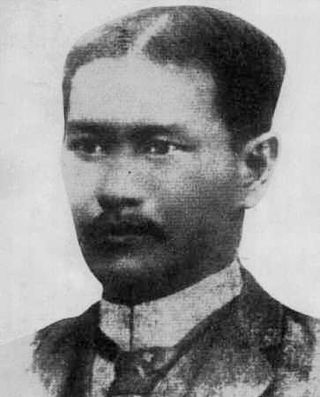 20
Graciano López y Jaena, commonly known as Graciano López Jaena, was a Filipino journalist, orator, reformist, and national hero who is well known for his newspaper, La Solidaridad (December 13,1888.
20
Graciano López y Jaena, commonly known as Graciano López Jaena, was a Filipino journalist, orator, reformist, and national hero who is well known for his newspaper, La Solidaridad (December 13,1888.
Our Lady of the Rosary
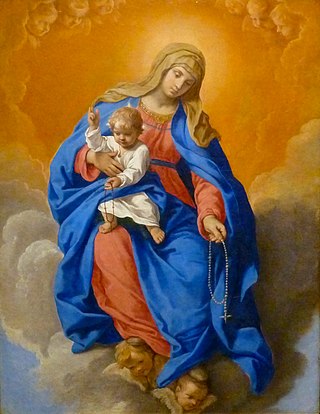 19
Our Lady of the Rosary, also known as Our Lady of the Holy Rosary, is a Marian title.
19
Our Lady of the Rosary, also known as Our Lady of the Holy Rosary, is a Marian title.
Juan Luna
 18
Juan Luna de San Pedro y Novicio Ancheta was a Filipino painter, sculptor and a political activist of the Philippine Revolution during the late 19th century. He became one of the first recognized...
18
Juan Luna de San Pedro y Novicio Ancheta was a Filipino painter, sculptor and a political activist of the Philippine Revolution during the late 19th century. He became one of the first recognized...
Roque González y de Santa Cruz
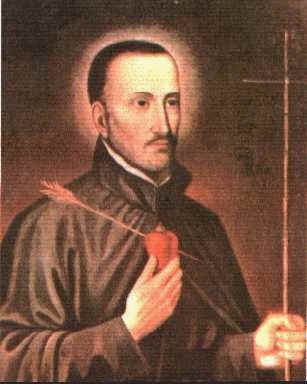 18
Roque González de Santa Cruz, SJ was a Jesuit priest who was the first missionary among the Guarani people in Paraguay. He is honored as a martyr and saint by the Catholic Church.
18
Roque González de Santa Cruz, SJ was a Jesuit priest who was the first missionary among the Guarani people in Paraguay. He is honored as a martyr and saint by the Catholic Church.
James the Great
 18
James the Great was one of the Twelve Apostles of Jesus. According to the New Testament, he was the second of the apostles to die, and the first to be martyred. Saint James is the patron saint of...
18
James the Great was one of the Twelve Apostles of Jesus. According to the New Testament, he was the second of the apostles to die, and the first to be martyred. Saint James is the patron saint of...
Augustine of Hippo
 16
Augustine of Hippo, also known as Saint Augustine, was a theologian and philosopher of Berber origin and the bishop of Hippo Regius in Numidia, Roman North Africa. His writings influenced the...
16
Augustine of Hippo, also known as Saint Augustine, was a theologian and philosopher of Berber origin and the bishop of Hippo Regius in Numidia, Roman North Africa. His writings influenced the...
Mark the Evangelist
 16
Mark the Evangelist also known as John Mark or Saint Mark, is the person who is traditionally ascribed to be the author of the Gospel of Mark. Modern Bible scholars have concluded that the Gospel of...
16
Mark the Evangelist also known as John Mark or Saint Mark, is the person who is traditionally ascribed to be the author of the Gospel of Mark. Modern Bible scholars have concluded that the Gospel of...
George Washington
 16
George Washington was an American Founding Father, military officer, and politician who served as the first president of the United States from 1789 to 1797. Appointed by the Second Continental...
16
George Washington was an American Founding Father, military officer, and politician who served as the first president of the United States from 1789 to 1797. Appointed by the Second Continental...
Saint Nicholas
 16
Saint Nicholas of Myra, also known as Nicholas of Bari, was an early Christian bishop of Greek descent from the maritime city of Patara in Anatolia during the time of the Roman Empire. Because of the...
16
Saint Nicholas of Myra, also known as Nicholas of Bari, was an early Christian bishop of Greek descent from the maritime city of Patara in Anatolia during the time of the Roman Empire. Because of the...
Emilio Jacinto
 15
Emilio Jacinto y Dizon was a Filipino general during the Philippine Revolution. He was one of the highest-ranking officers in the Philippine Revolution and was one of the highest-ranking officers of...
15
Emilio Jacinto y Dizon was a Filipino general during the Philippine Revolution. He was one of the highest-ranking officers in the Philippine Revolution and was one of the highest-ranking officers of...
Cayetano Arellano
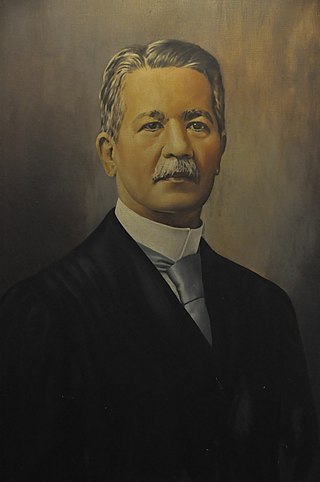 15
Cayetano Simplicio Arellano y Lonzón was the first Chief Justice of the Supreme Court of the Philippines under the American Civil Government. Cayetano Arellano had occupied a high position in...
15
Cayetano Simplicio Arellano y Lonzón was the first Chief Justice of the Supreme Court of the Philippines under the American Civil Government. Cayetano Arellano had occupied a high position in...
Ninoy Aquino
 14
Benigno "Ninoy" Simeon Aquino Jr., was a Filipino politician who served as a senator of the Philippines (1967–1972) and governor of the province of Tarlac. Aquino was the husband of Corazon Aquino,...
14
Benigno "Ninoy" Simeon Aquino Jr., was a Filipino politician who served as a senator of the Philippines (1967–1972) and governor of the province of Tarlac. Aquino was the husband of Corazon Aquino,...
Ferdinand Magellan
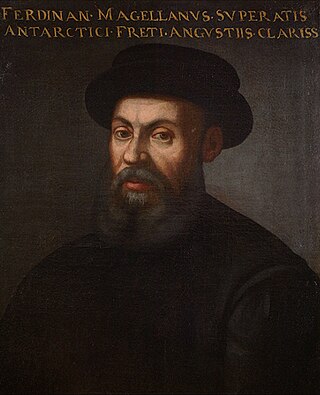 13
Ferdinand Magellan was a Portuguese explorer best known for having planned and led the 1519 Spanish expedition to the East Indies across the Pacific Ocean to open a maritime trade route, during which...
13
Ferdinand Magellan was a Portuguese explorer best known for having planned and led the 1519 Spanish expedition to the East Indies across the Pacific Ocean to open a maritime trade route, during which...
Mary, mother of Jesus
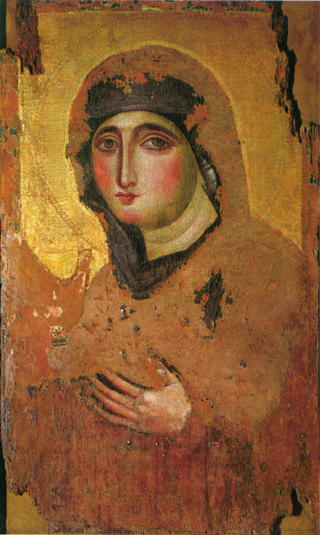 13
Mary was a first-century Jewish woman of Nazareth, the wife of Joseph and the mother of Jesus. She is a central figure of Christianity, venerated under various titles such as virgin or queen, many of...
13
Mary was a first-century Jewish woman of Nazareth, the wife of Joseph and the mother of Jesus. She is a central figure of Christianity, venerated under various titles such as virgin or queen, many of...
Raphael (archangel)
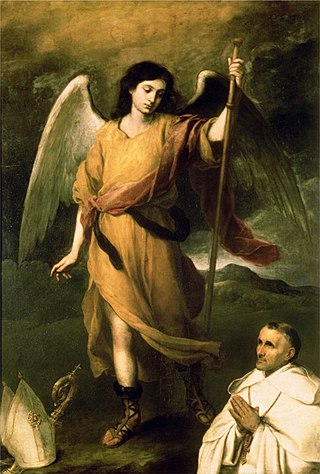 12
Raphael is an archangel first mentioned in the Book of Tobit and in 1 Enoch, both estimated to date from between the 3rd and 2nd century BCE. In later Jewish tradition, he became identified as one of...
12
Raphael is an archangel first mentioned in the Book of Tobit and in 1 Enoch, both estimated to date from between the 3rd and 2nd century BCE. In later Jewish tradition, he became identified as one of...
Aurora Quezon
 10
Aurora Antonia Aragon Quezon was the wife of Philippine President Manuel Luis Quezon and the First Lady of the Philippines from 1935 to 1944. Although she is recognized as the second First Lady of...
10
Aurora Antonia Aragon Quezon was the wife of Philippine President Manuel Luis Quezon and the First Lady of the Philippines from 1935 to 1944. Although she is recognized as the second First Lady of...
Antero Soriano
 10
Antero Sosa Soriano was a Filipino congressman, senator, and governor of Cavite from Tanza, Cavite.
10
Antero Sosa Soriano was a Filipino congressman, senator, and governor of Cavite from Tanza, Cavite.
Paul the Apostle
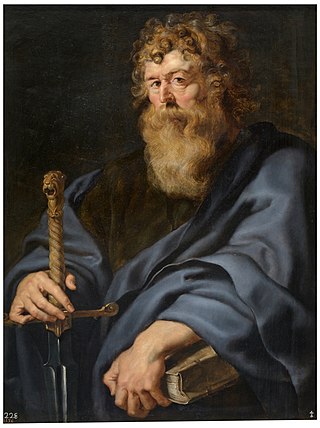 10
Paul, commonly known as Paul the Apostle and Saint Paul, was a Christian apostle who spread the teachings of Jesus in the first-century world. For his contributions towards the New Testament, he is...
10
Paul, commonly known as Paul the Apostle and Saint Paul, was a Christian apostle who spread the teachings of Jesus in the first-century world. For his contributions towards the New Testament, he is...
Miguel Malvar
 10
Miguel Malvar y Carpio was a Filipino general who served during the Philippine Revolution and, subsequently, during the Philippine–American War. He assumed command of the Philippine revolutionary...
10
Miguel Malvar y Carpio was a Filipino general who served during the Philippine Revolution and, subsequently, during the Philippine–American War. He assumed command of the Philippine revolutionary...
Felix Manalo
 10
Felix Y. Manalo , also known as Ka Felix, was the first Executive Minister of Iglesia ni Cristo. Members of Iglesia Ni Cristo believe that Felix Manalo is the last messenger of God. He is the father...
10
Felix Y. Manalo , also known as Ka Felix, was the first Executive Minister of Iglesia ni Cristo. Members of Iglesia Ni Cristo believe that Felix Manalo is the last messenger of God. He is the father...
Manuel del Rosario
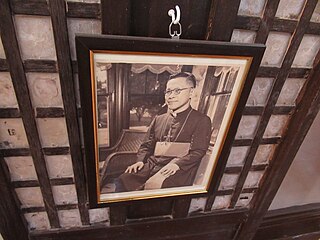 10
Manuel P. Del Rosario was a Filipino prelate of the Roman Catholic Church. At the time of his death, Del Rosario was the oldest Filipino bishop and one of the oldest Catholic bishops. He was...
10
Manuel P. Del Rosario was a Filipino prelate of the Roman Catholic Church. At the time of his death, Del Rosario was the oldest Filipino bishop and one of the oldest Catholic bishops. He was...
Saint Lucy
 9
Lucia of Syracuse (283–304), also called Saint Lucia was a Roman Christian martyr who died during the Diocletianic Persecution. She is venerated as a saint in Catholic, Anglican, Lutheran, and...
9
Lucia of Syracuse (283–304), also called Saint Lucia was a Roman Christian martyr who died during the Diocletianic Persecution. She is venerated as a saint in Catholic, Anglican, Lutheran, and...
Diosdado Macapagal
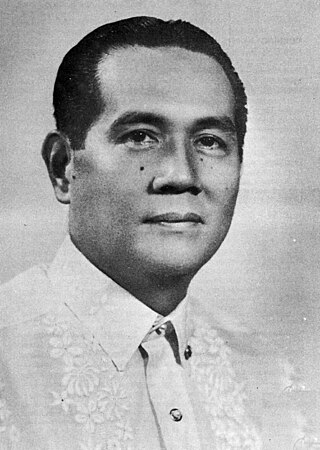 9
Diosdado Pangan Macapagal was a Filipino lawyer, poet and politician who served as the ninth President of the Philippines, serving from 1961 to 1965, and the sixth Vice President, serving from 1957...
9
Diosdado Pangan Macapagal was a Filipino lawyer, poet and politician who served as the ninth President of the Philippines, serving from 1961 to 1965, and the sixth Vice President, serving from 1957...
Saint Dominic
 9
Saint Dominic,, also known as Dominic de Guzmán, was a Castilian Catholic priest and the founder of the Dominican Order. He is the patron saint of astronomers and natural scientists, and he and his...
9
Saint Dominic,, also known as Dominic de Guzmán, was a Castilian Catholic priest and the founder of the Dominican Order. He is the patron saint of astronomers and natural scientists, and he and his...
Ferdinand III of Castile
 9
Ferdinand III, called the Saint, was King of Castile from 1217 and King of León from 1230 as well as King of Galicia from 1231. He was the son of Alfonso IX of León and Berenguela of Castile. Through...
9
Ferdinand III, called the Saint, was King of Castile from 1217 and King of León from 1230 as well as King of Galicia from 1231. He was the son of Alfonso IX of León and Berenguela of Castile. Through...
Saint Sebastian
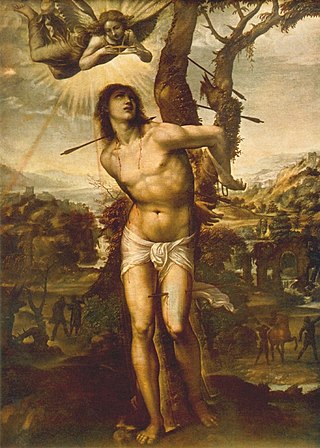 9
Sebastian was an early Christian saint and martyr. According to traditional belief, he was killed during the Diocletianic Persecution of Christians. He was initially tied to a post or tree and shot...
9
Sebastian was an early Christian saint and martyr. According to traditional belief, he was killed during the Diocletianic Persecution of Christians. He was initially tied to a post or tree and shot...
Saint Monica
 8
Monica was an early North African Christian saint and the mother of Augustine of Hippo. She is remembered and honored in the Catholic and Orthodox Churches, albeit on different feast days, for her...
8
Monica was an early North African Christian saint and the mother of Augustine of Hippo. She is remembered and honored in the Catholic and Orthodox Churches, albeit on different feast days, for her...
Saint Anne
 8
According to apocrypha, as well as Christian and Islamic tradition, Saint Anne was the mother of Mary, the wife of Joachim and the maternal grandmother of Jesus. Mary's mother is not named in the...
8
According to apocrypha, as well as Christian and Islamic tradition, Saint Anne was the mother of Mary, the wife of Joachim and the maternal grandmother of Jesus. Mary's mother is not named in the...
Rose of Lima
 8
Rose of Lima, TOSD was a member of the Third Order of Saint Dominic in Lima, Peru, who became known for both her life of severe penance and her care of the poverty stricken of the city through her...
8
Rose of Lima, TOSD was a member of the Third Order of Saint Dominic in Lima, Peru, who became known for both her life of severe penance and her care of the poverty stricken of the city through her...
María Clara
 8
María Clara de los Santos is a character in José Rizal's novel Noli Me Tángere (1887). The beautiful María Clara is the childhood sweetheart and fiancée of the protagonist, Crisóstomo Ibarra, who...
8
María Clara de los Santos is a character in José Rizal's novel Noli Me Tángere (1887). The beautiful María Clara is the childhood sweetheart and fiancée of the protagonist, Crisóstomo Ibarra, who...
Gil Puyat
 7
Gil Juco Puyat Sr. was a Filipino politician and businessman who served as a Senator of the Philippines from 1951 until 1972, when President Ferdinand Marcos shut Congress down and declared Martial...
7
Gil Juco Puyat Sr. was a Filipino politician and businessman who served as a Senator of the Philippines from 1951 until 1972, when President Ferdinand Marcos shut Congress down and declared Martial...
Carlos P. Garcia
 7
Carlos Polestico Garcia, often referred to by his initials CPG, was a Filipino teacher, poet, orator, lawyer, public official, political economist, guerrilla and Commonwealth military leader who was...
7
Carlos Polestico Garcia, often referred to by his initials CPG, was a Filipino teacher, poet, orator, lawyer, public official, political economist, guerrilla and Commonwealth military leader who was...
Matthew the Apostle
 7
Matthew the Apostle is named in the New Testament as one of the twelve apostles of Jesus. According to Christian traditions, he was also one of the four Evangelists as author of the Gospel of...
7
Matthew the Apostle is named in the New Testament as one of the twelve apostles of Jesus. According to Christian traditions, he was also one of the four Evangelists as author of the Gospel of...
Jesus
 6
Jesus, also referred to as Jesus Christ, Jesus of Nazareth, and many other names and titles, was a first-century Jewish preacher and religious leader. He is the central figure of Christianity, the...
6
Jesus, also referred to as Jesus Christ, Jesus of Nazareth, and many other names and titles, was a first-century Jewish preacher and religious leader. He is the central figure of Christianity, the...
Juanito Remulla Sr.
 6
Juanito "Johnny" Reyes Remulla Sr. was a Filipino lawyer and politician who served as the longest sitting governor of Cavite.
6
Juanito "Johnny" Reyes Remulla Sr. was a Filipino lawyer and politician who served as the longest sitting governor of Cavite.
Tomás Claudio
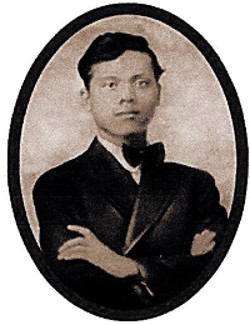 6
Tomás Claudio y Mateo was a Filipino soldier who enlisted in the U.S. Army during the First World War. He was considered as the first Filipino to die overseas in the midst of an international...
6
Tomás Claudio y Mateo was a Filipino soldier who enlisted in the U.S. Army during the First World War. He was considered as the first Filipino to die overseas in the midst of an international...
Pedro Guevara
 5
Pedro Valenzuela Guevara, was a Filipino soldier, lawyer, legislator, and Spanish-language writer who became Resident Commissioner of the Philippines during the American occupation.
5
Pedro Valenzuela Guevara, was a Filipino soldier, lawyer, legislator, and Spanish-language writer who became Resident Commissioner of the Philippines during the American occupation.
Manuel Briones
 5
Manuel Cabahug Briones was Filipino Visayan lawyer, judge, and politician from Cebu, Philippines. He was the first Supreme Court Associate Justice from Cebu, and he was a former Associate Justice of...
5
Manuel Cabahug Briones was Filipino Visayan lawyer, judge, and politician from Cebu, Philippines. He was the first Supreme Court Associate Justice from Cebu, and he was a former Associate Justice of...
John the Baptist
 5
John the Baptist was a Jewish preacher active in the area of the Jordan River in the early 1st century AD. He is also known as Saint John the Forerunner in Eastern Orthodoxy, John the Immerser in...
5
John the Baptist was a Jewish preacher active in the area of the Jordan River in the early 1st century AD. He is also known as Saint John the Forerunner in Eastern Orthodoxy, John the Immerser in...
Pedro Paterno
 5
Pedro Alejandro Paterno y de Vera Ignacio was a Filipino politician infamous for being a turncoat. He was also a poet and a novelist.
5
Pedro Alejandro Paterno y de Vera Ignacio was a Filipino politician infamous for being a turncoat. He was also a poet and a novelist.
Epifanio de los Santos
 4
Epifanio de los Santos y Cristóbal, also known as Don Pañong or Don Panyong, was a notable Filipino historian, journalist, and civil servant. He was regarded as one of the best Filipino writers and a...
4
Epifanio de los Santos y Cristóbal, also known as Don Pañong or Don Panyong, was a notable Filipino historian, journalist, and civil servant. He was regarded as one of the best Filipino writers and a...
Mariano Jesús Cuenco
 4
Don Mariano Jesús Cuenco y Diosómito was a Filipino politician and writer from Cebu. He was the 4th President of the Senate of the Philippines.
4
Don Mariano Jesús Cuenco y Diosómito was a Filipino politician and writer from Cebu. He was the 4th President of the Senate of the Philippines.
Lorenzo Ruiz
 4
Lorenzo Ruiz, also called Saint Lorenzo of Manila, is a Filipino saint venerated in the Catholic Church. A Chinese Filipino, he became his country's protomartyr after his execution in Japan by the...
4
Lorenzo Ruiz, also called Saint Lorenzo of Manila, is a Filipino saint venerated in the Catholic Church. A Chinese Filipino, he became his country's protomartyr after his execution in Japan by the...
Narciso Ramos
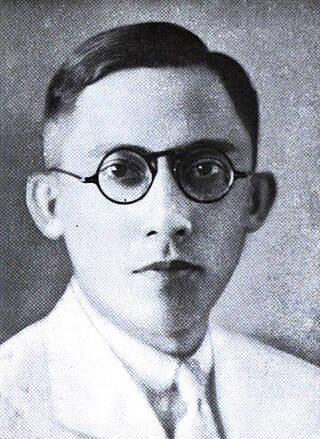 4
Narciso Rueca Ramos was a Filipino journalist, lawyer, assemblyman and ambassador. He was the father of former Philippine President Fidel V. Ramos and Philippine Senator Leticia Ramos-Shahani.
4
Narciso Rueca Ramos was a Filipino journalist, lawyer, assemblyman and ambassador. He was the father of former Philippine President Fidel V. Ramos and Philippine Senator Leticia Ramos-Shahani.
Carlos Palanca (born 1884)
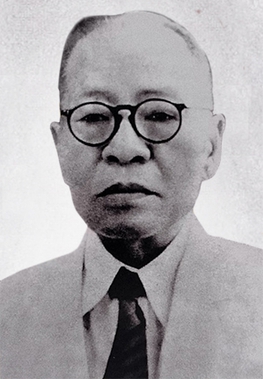 3
Carlos Palanca Sr., also known as Tan Guin Lay, was a Chinese-Filipino businessman and philanthropist.
3
Carlos Palanca Sr., also known as Tan Guin Lay, was a Chinese-Filipino businessman and philanthropist.
Pedro Gil
 3
Pedro Gil y Hernandez was a Filipino physician, journalist, and legislator. He served in different distinguished roles - as a labor leader, as a doctor of medicine, as a crusading newspaperman, as a...
3
Pedro Gil y Hernandez was a Filipino physician, journalist, and legislator. He served in different distinguished roles - as a labor leader, as a doctor of medicine, as a crusading newspaperman, as a...
Franklin D. Roosevelt
 3
Franklin Delano Roosevelt, commonly known by his initials FDR, was an American statesman and politician who served as the 32nd president of the United States from 1933 until his death in 1945. He was...
3
Franklin Delano Roosevelt, commonly known by his initials FDR, was an American statesman and politician who served as the 32nd president of the United States from 1933 until his death in 1945. He was...
Ermin Garcia
 3
Ermin E. Garcia Sr was a Filipino journalist and newspaper publisher. A street in Brgy. E. Rodriguez, Quezon City was named after him.
3
Ermin E. Garcia Sr was a Filipino journalist and newspaper publisher. A street in Brgy. E. Rodriguez, Quezon City was named after him.
Mariano Trías
 3
Mariano Trías y Closas is considered to be the first de facto Philippine Vice President of that revolutionary government established at the Tejeros Convention - an assembly of Philippine...
3
Mariano Trías y Closas is considered to be the first de facto Philippine Vice President of that revolutionary government established at the Tejeros Convention - an assembly of Philippine...
Andrew the Apostle
 3
Andrew the Apostle, also called Saint Andrew, was an apostle of Jesus. According to the New Testament, he was a fisherman and one of the Twelve Apostles chosen by Jesus. The title First-Called stems...
3
Andrew the Apostle, also called Saint Andrew, was an apostle of Jesus. According to the New Testament, he was a fisherman and one of the Twelve Apostles chosen by Jesus. The title First-Called stems...
Benigno Aquino Sr.
 3
Benigno Simeón Quiambao Aquino Sr. was a Filipino politician who served as Speaker of the National Assembly of the Japanese-sponsored puppet state in the Philippines from 1943 to 1944.
3
Benigno Simeón Quiambao Aquino Sr. was a Filipino politician who served as Speaker of the National Assembly of the Japanese-sponsored puppet state in the Philippines from 1943 to 1944.
Eugenio López Sr.
 3
Eugenio "Eñing" Hofileña López Sr. was a leading business figure in the Philippines. He was the founder of López Group of Companies. He belonged to the prominent López family of Iloilo, one of the...
3
Eugenio "Eñing" Hofileña López Sr. was a leading business figure in the Philippines. He was the founder of López Group of Companies. He belonged to the prominent López family of Iloilo, one of the...
Fidel Castro
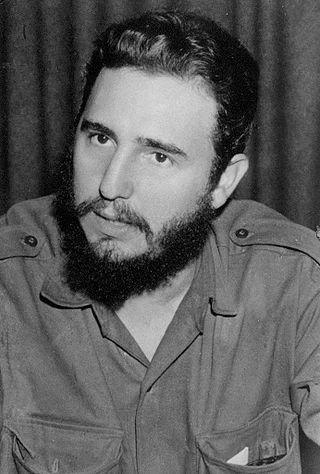 3
Fidel Alejandro Castro Ruz was a Cuban revolutionary and politician who was the leader of Cuba from 1959 to 2008, serving as the prime minister of Cuba from 1959 to 1976 and president from 1976 to...
3
Fidel Alejandro Castro Ruz was a Cuban revolutionary and politician who was the leader of Cuba from 1959 to 2008, serving as the prime minister of Cuba from 1959 to 1976 and president from 1976 to...
Louis of Toulouse
 3
Saint Louis of Toulouse, also known as Louis of Anjou, was a Neapolitan prince of the Capetian House of Anjou and a Catholic bishop.
3
Saint Louis of Toulouse, also known as Louis of Anjou, was a Neapolitan prince of the Capetian House of Anjou and a Catholic bishop.
Maria Clara Lobregat
 3
María Clara Lorenzo de Lobregat was a Filipina politician. She was the first female mayor and also a representative to the Philippine Congress of Zamboanga City.
3
María Clara Lorenzo de Lobregat was a Filipina politician. She was the first female mayor and also a representative to the Philippine Congress of Zamboanga City.
Gabriel
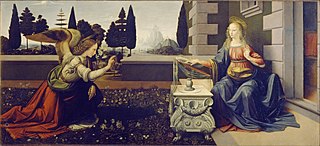 3
In the Abrahamic religions, Gabriel is an archangel with the power to announce God's will to mankind. He is mentioned in the Hebrew Bible, the New Testament, the Quran and the Kitáb-i-Aqdas. Many...
3
In the Abrahamic religions, Gabriel is an archangel with the power to announce God's will to mankind. He is mentioned in the Hebrew Bible, the New Testament, the Quran and the Kitáb-i-Aqdas. Many...
Teodoro Kalaw
 3
Teodoro Manguiat Kalaw was a Filipino scholar, legislator, and historian.
3
Teodoro Manguiat Kalaw was a Filipino scholar, legislator, and historian.
Nicolas Capistrano
 3
Nicolas Fernandez Capistrano was a Filipino lawyer, statesman and revolutionary general who fought against the Americans from 1899 to 1901 during the Philippine-American War and was later elected as...
3
Nicolas Fernandez Capistrano was a Filipino lawyer, statesman and revolutionary general who fought against the Americans from 1899 to 1901 during the Philippine-American War and was later elected as...
Juan dela Cruz
 3
Juan de la Cruz or Maria de la Cruz is the national personification of the Philippines, often used to represent the "Filipino everyman". He is usually depicted wearing the native salakot hat, Barong...
3
Juan de la Cruz or Maria de la Cruz is the national personification of the Philippines, often used to represent the "Filipino everyman". He is usually depicted wearing the native salakot hat, Barong...
Didacus of Alcalá
 3
Didacus of Alcalá, also known as Diego de San Nicolás, was a Spanish Franciscan lay brother who served among the first group of missionaries to the newly conquered Canary Islands. He died at Alcalá...
3
Didacus of Alcalá, also known as Diego de San Nicolás, was a Spanish Franciscan lay brother who served among the first group of missionaries to the newly conquered Canary Islands. He died at Alcalá...
Joachim
 3
Joachim was, according to Christianity, the husband of Saint Anne, the father of Mary, mother of Jesus, and the maternal grandfather of Jesus.
3
Joachim was, according to Christianity, the husband of Saint Anne, the father of Mary, mother of Jesus, and the maternal grandfather of Jesus.
Philomena
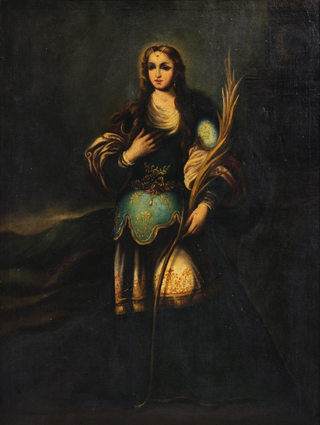 3
Philomena, also known as Saint Philomena or Philomena of Rome was a virgin martyr whose remains were discovered on May 24–25, 1802, in the Catacomb of Priscilla. Three tiles enclosing the tomb bore...
3
Philomena, also known as Saint Philomena or Philomena of Rome was a virgin martyr whose remains were discovered on May 24–25, 1802, in the Catacomb of Priscilla. Three tiles enclosing the tomb bore...
Gregorio S. Araneta
 3
Don Gregorio Soriano Araneta was a Filipino lawyer, businessman, and nationalist, during the Spanish and American colonial periods.
3
Don Gregorio Soriano Araneta was a Filipino lawyer, businessman, and nationalist, during the Spanish and American colonial periods.
Bernardino of Siena
 3
Bernardino of Siena, OFM, was an Italian Catholic priest and Franciscan missionary preacher in Italy. He was a systematizer of scholastic economics.
3
Bernardino of Siena, OFM, was an Italian Catholic priest and Franciscan missionary preacher in Italy. He was a systematizer of scholastic economics.
Saint Cecilia
 3
Saint Cecilia, also spelled Cecelia, was a Roman virgin martyr and is venerated in Catholic, Orthodox, Anglican, and some Lutheran churches, such as the Church of Sweden. She became the patroness of...
3
Saint Cecilia, also spelled Cecelia, was a Roman virgin martyr and is venerated in Catholic, Orthodox, Anglican, and some Lutheran churches, such as the Church of Sweden. She became the patroness of...